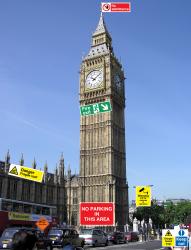The Law of Safety Signs
Safety signs, the law and you…

In the UK the design and use of safety signs is covered by legislation and regulated by a various standards – so if you don’t know what to do or understand what this means to you, it’s no wonder.
Whilst Viking Signs is not a Health and Safety services provider – our extensive experience of producing safety signs, gives us a unique insight into the application of signs as a part of complete health and safety management policy.
This page is only an attempt to de-mystify the law regarding safety signs, it is not a substitute for professional Health and Safety advice or appropriate legal counsel, and no liability can be accepted for omissions and errors, or for any result of the use or application of anything contained herein. That said – hopefully it’s either interesting or useful to someone!
The more detailed requirements from the applicable British Standard (BS5499) is covered separately under Safety Sign Regulations.
The main legal instrument covering the use of safety signs is “The Health and Safety (Safety Signs and Signals) Regulations 1996 (Statutory Instrument 1996 No.341)” ISBN 011054093X.
Whilst this document covers a broad range of safety ‘signs’ including ‘acoustic and hand signals’, it is the primary law covering both the design and use of safety signage. To control the design, the separate types of safety signs are specifically referred to with definitions, the required dedicated colours mandated and a small part of the standardised symbol set controlled.
The legal definitions are as follows:
- An “emergency escape or first-aid sign” (often called a ‘safe condition sign’) is a sign giving information on escape routes or emergency exits or first-aid or rescue facilities. These signs are required to be green.
- A “fire safety sign” means a sign (including an illuminated sign or an acoustic signal) which (i) provides information on escape routes and emergency exits in case of fire; (ii) provides information on the identification or location of fire-fighting equipment; or (iii) gives warning in case of fire. These signs are required to be red.
- A “mandatory sign” means a sign prescribing behaviour. These signs are required to be blue.
- A “prohibition sign” means a sign prohibiting behaviour likely to cause a risk to health or safety. These signs are required to be red.
- A “warning sign” means a sign giving a warning of a risk to health or safety. These signs are required to be yellow or amber.
The requirements for the application of safety signage are ‘explained’ in complex legalise. A summary of this is:
The use of safety signage is required, if a risk assessment made under the Management of Health and Safety at Work Regulations 1992 indicates that they are the only method remaining to further reduce risks to employees.
The regulations cover signs used in the whole of Great Britain including premises and activities outside of Great Britain covered by The Health and Safety at Work Act. Northern Ireland is excluded.
Safety signs should be used to warn or instruct, or both; once all other appropriate measures, methods or procedures have been taken to reduce risk, and that risk is no longer ‘significant’.
Once installed safety signs must be maintained and explained to employees if they are unfamiliar with either the sign or its implications for them.
This law effectively brought into force the EC Safety Signs Directive 92/58/EEC. Although not specifically referred to in the either UK or EU legislation the British Standard BS5499, gives much more extensive guidance on the design of signs intended to comply with these laws.
A summary document is also provided by the Health and Safety Executive – “Signpost to the Health and Safety (Safety Signs and Signals) Regulations 1996” which contains an explanation of the purpose, extend and impact of the regulations on employers.
Another important legal instrument covering the design and use of hazard warning diamonds is “The Carriage of Dangerous Goods by Road and Rail (Classification, Packaging and Labelling) Regulations 1994” (Statutory Instrument 1994 No. 669).
This document divides dangerous substances into classification groups, with an explanation of their hazardous properties and appropriate signage during transportation.
Class 2 covers gases, class 3 liquids, class 4 other substances, class 5 oxidising agents, class 6 toxic or infectious substances, class 8 corrosive & class 9 ‘others’. The design and use of appropriate hazard warning diamonds for each classification is described in detail.
